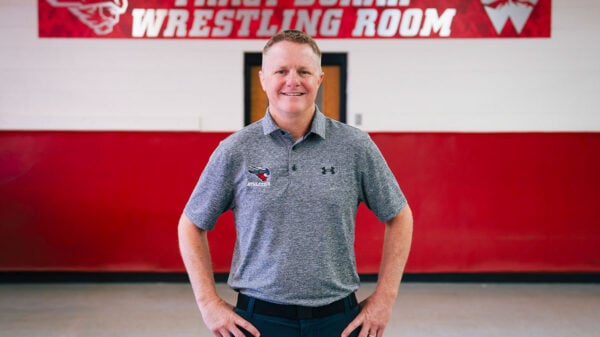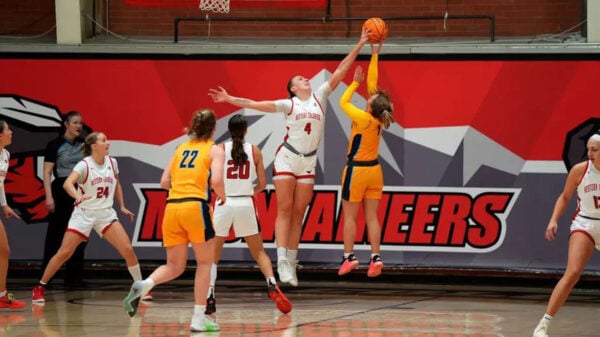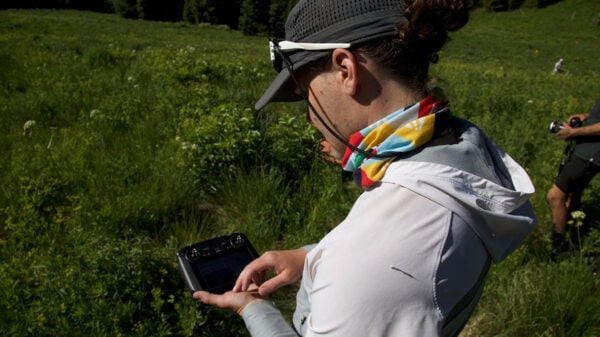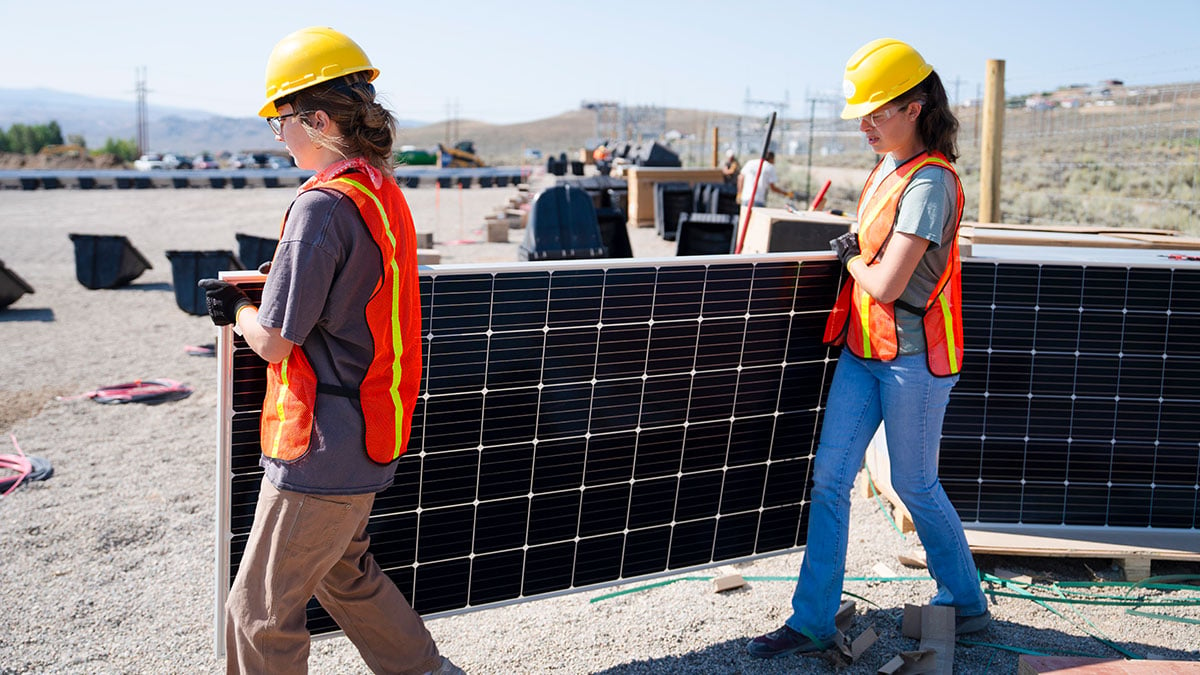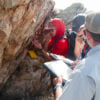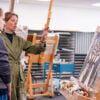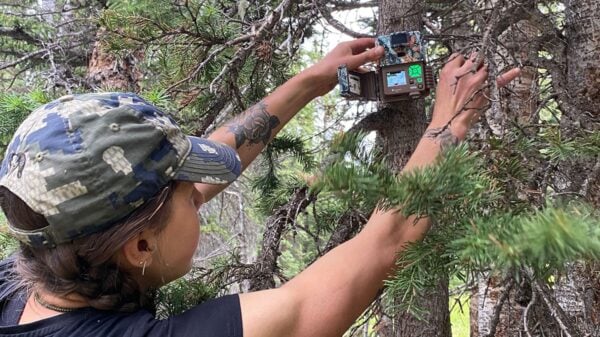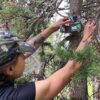Western students help build Gunnison’s newest solar array
For years, the six-acre lot beside Country Road 17, west of Gunnison, sat mostly empty, tucked between a power substation and a growing Antelope Hills neighborhood. So close to high-voltage lines, it wasn’t ideal for a family home. But it turned out to be the perfect place to help meet another critical need: clean energy.
Last February, Gunnison County Electric Association (GCEA), the area’s power co-op, bought the property with the intention of installing a solar array to meet growing energy demand and its own commitments to provide members with power generated through a growing mix of clean energy.
In a place where the last cheap land was sold long ago, large-scale solar projects seem hard to justify. So to keep the cost down, GCEA enlisted the help of Virginia-based solar installer Powerfield Energy, which has a novel method and proprietary solar installation system that kept the cost down and the timeline short.
“When we did our first community solar ‘Barn Raising’ with Holy Cross Energy in Glenwood Springs in 2019, GCEA heard about it and was impressed by the ease of installation, versatility, and how we could incorporate local labor and even volunteers into the construction of the solar array,” PowerField CEO Drew Bond said. “GCEA suggested we reach out to Richard Stromberg in the Master of Environmental Management department at WCU. Richard connected us with Skylee Barry, the president of the Solar Society, and the rest is history. The students were awesome!”
Skylee, who’s studying Business Administration with an emphasis in Energy Management and a minor in Environment & Sustainability and is president of Western’s Solar Society, led the effort to recruit students, offering $15 an hour for installers and $28 for skid-steer operators. The 10 students who turned out came from all over campus. Some were Energy Management students, but others came from Business Administration, Environment & Sustainability, and Computer Science. For everyone, the work was eye-opening. “We’ve been looking for solar projects all around to get students involved with,” she said. “Our main goal is to get students hands-on with a project so they actually learn how to do the electrical work and installation.”
For Skylee, as a student studying energy management, the installation project was an opportunity to continue being involved in the industry and see firsthand how solar power continues to evolve. “I’ve done a lot of roof installs, but I’ve never done something where it’s a gravel pit and then we’re going in and, like, have skid steers and it’s a full-on construction site. We had to wear hard hats and vests,” Skylee said. “I think the biggest thing that I learned was the different ways that you can do solar.”
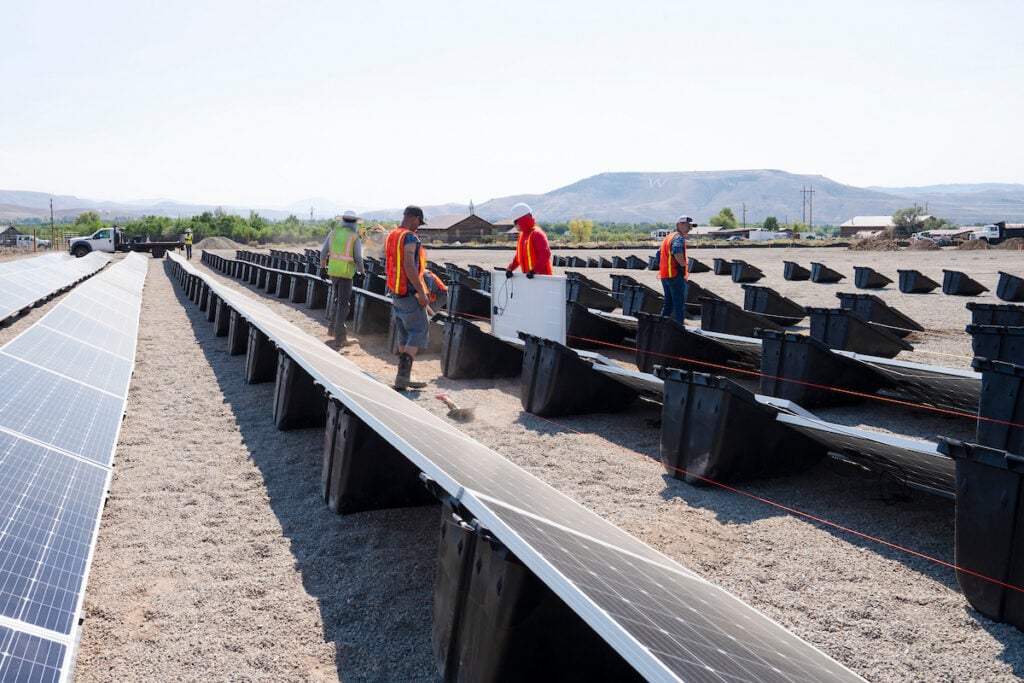
For GCEA, which serves more than 11,000 members across Gunnison and Hinsdale counties, the project fits into a larger push toward renewable sources of power. The cooperative already gets more than a third of its power from mostly wind through Tri-State and runs its own community solar garden in Crested Butte. This year, GCEA also started operating a 500-kilowatt hydroelectric turbine at Taylor Park Dam, which is enough to power 500 homes and businesses annually.
Tri-State, the larger cooperative that supplies GCEA, is moving in the same direction. In 2024, it gained federal support to add nearly 1,500 megawatts of solar, wind, and storage across four states, and, in a first for the 70-year-old supplier, it recently purchased two large Colorado solar farms outright.
For PowerField, which has more than 200 installations around the country, the Gunnison project was one of just a few community solar “barn raisings,” when they brings local people together to build a local project in a short period of time. Their first similar project was at the National Renewable Energy Laboratory in Golden, CO, which was a test to see if the concept would work. Then, after it did, the company installed a 210kW facility at Holy Cross Energy in Glenwood Springs, and hosted a 210kW community solar project in Gypsum.
“Powerfield Energy likes to involve local students to help them gain real-world, practical skills in renewable energy, project management, and teamwork,” Bond said. “This project not only helps the students directly contribute to clean energy adoption, connect with industry professionals and engineers that may open the doors for mentorships or careers after graduation, but they can take what they learn in the field back to the campus and directly influence peers and spread awareness of renewable energy.”
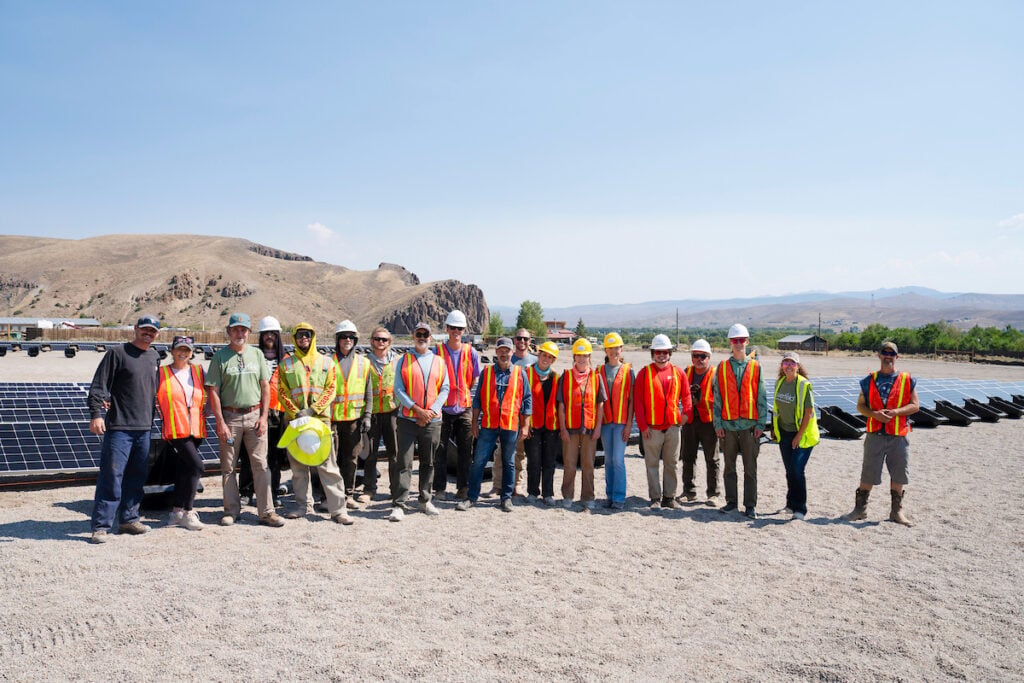
For the students, the work was hard, the pay was respectable, and lunch and snacks were provided. But PowerField’s installation method was itself a lesson in innovation to see. Instead of pouring concrete footings for supports to hold the panels, the students used a skid steer to fill plastic ‘PowerRack’ buckets with gravel, arranging them in 72 rows before mounting and wiring 3,172 380-watt photovoltaic panels in place. With each panel measuring just three feet by six feet, the design allows for an array to be installed just about anywhere with very few tools and little skilled labor. The students, working alongside some other hired help that included a few local high schoolers, hauled gravel, moved mounting buckets into position, and prepared panels for installation. They were finished with the 975kW array in less than a week. “This is by far the fastest and most successful one we’ve done to demonstrate the speed of construction,” Bond said. “What we did in one week in Gunnison takes other companies two months or more.”
But perhaps more important than the experience of installing the solar array were the industry connections students were able to make and the conversations that took place between bucket loads. Powerfield’s leadership, including founder and CEO Drew Bond and several other executives, was on site, working side-by-side with students. “Students would ask questions about how they started the company, and they got their financing for the project and all that kind of stuff,” Skylee said. “They were really open to teaching students and offering them internships while we were working. So it was a really good professional development project, too.”
For his part, Bond believes student involvement in these types of projects provides practical benefits in manpower and energy and intangible value in terms of enthusiasm and fresh perspectives. But it also shows the students that new innovations are still being made all the time.
For Skylee, solar power is a complicated energy source that she finds interesting for many reasons, but mainly because it’s new and we don’t really know that much about it yet. However, the PowerField project underscored something that we do know. “Energy management is still dominated by oil and gas,” she said. “And projects like this show us that solar is still part of the conversation.”



